New Ironclad Evidence of Japanese Atrocities in Nanjing | "Nanjinger" Lu Zhaoning Continuously "Salvages" Historical Materials Abroad for 21 Years and Donates Them to Our Memorial Hall
From New York to Nanjing, across the Pacific Ocean, and through a 12-hour time difference, the American-born Chinese Lu Zhaoning, driven by a deep sense of attachment to his homeland, brought back the historical materials he had collected overseas to his ancestral homeland. On May 9th, a donation ceremony of cultural relics and historical materials by Lu Zhaoning was held at the memorial hall. A total of 89 items (sets) of ironclad evidence of Japanese atrocities in Nanjing were unveiled.
According to statistics, since 2004, Lu Zhaoning has continuously donated historical artifacts and materials to the memorial hall, totaling 2,152 sets (2,660 pieces) over 21 years.
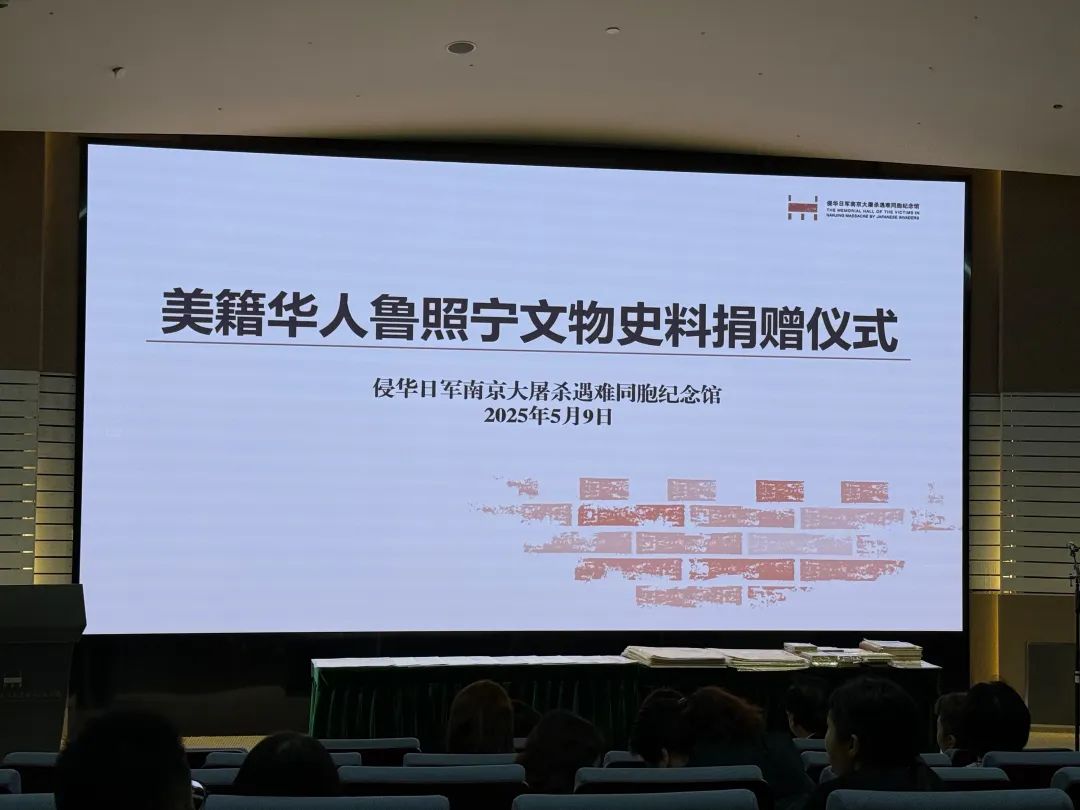
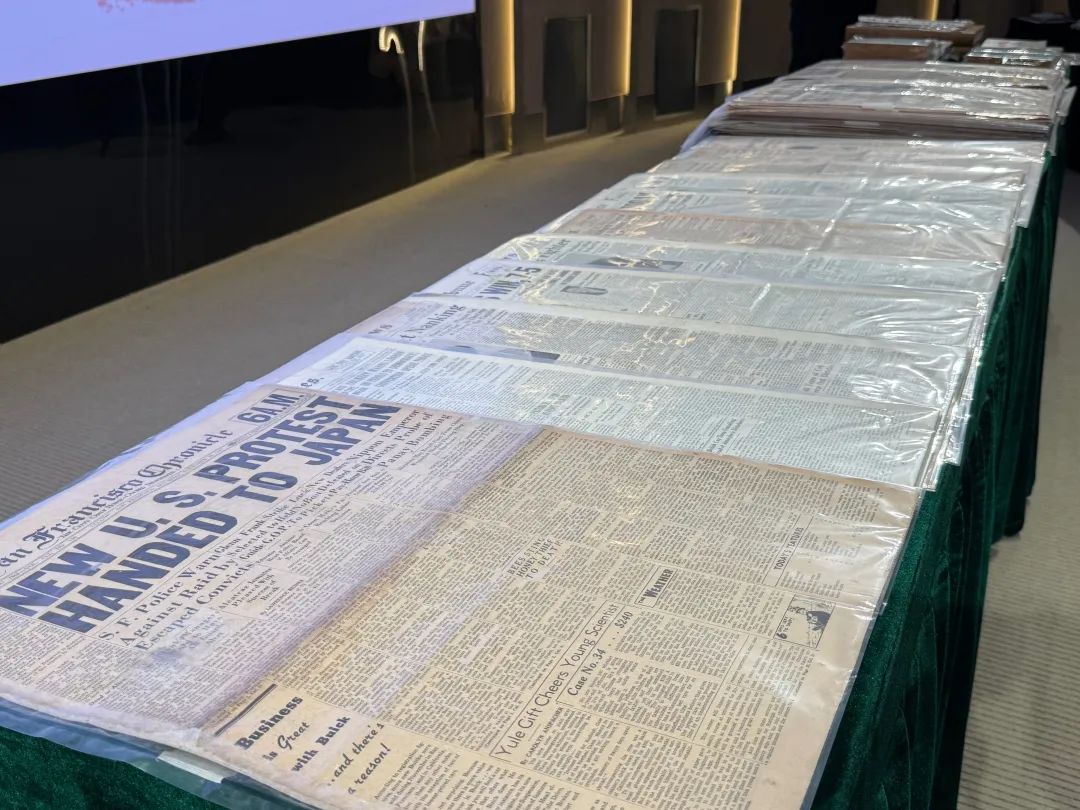
The atrocities committed by the Japanese army in Nanjing 88 years ago are vividly depicted
The newly donated 89 materials include newspapers, magazines, books, pictorials, and audiovisual content, all collected and organized by Lu Zhaoning in the United States over the past year. The majority are newspapers, with 19 different titles, including The New York Times, Chicago Daily Tribune, San Francisco Chronicle, New York World-Telegram, and St. Louis Post-Dispatch, all authoritative American media outlets. They provide a true record of the Japanese military's atrocities in Nanjing from various perspectives.

At the donation ceremony, Lu Zhaoning becomes emotional while introducing the nine representative newspapers
On December 18, 1937, the San Francisco Chronicle published a feature on page 2, reprinting a report from Chicago Daily News correspondent Archibald Steele. Sent from the USS Wahu on December 15, the report stated: “As we left the city, the last thing we saw was the systematic execution of 300 Chinese near the river embankment, where the bodies had already piled up knee-deep... This is a typical picture of the horrors in Nanjing over the past few days.”
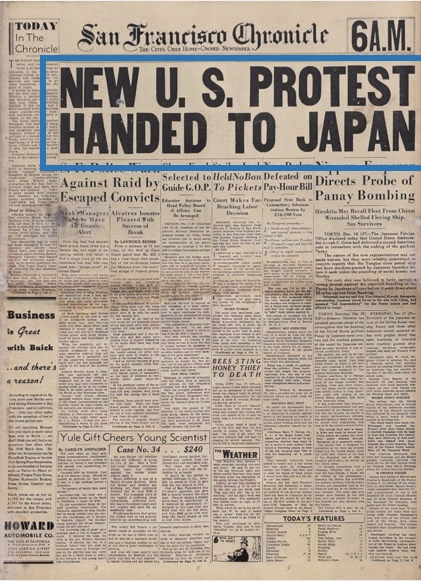
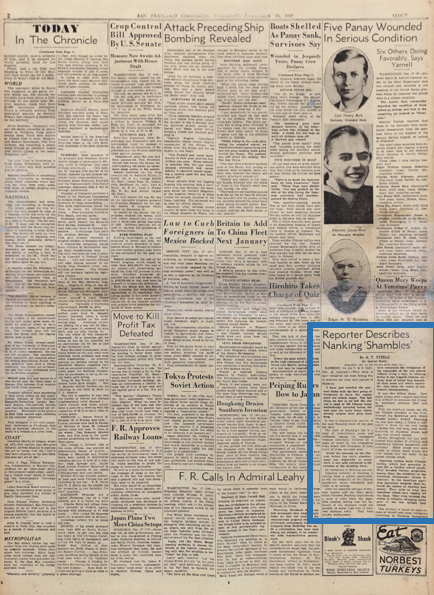
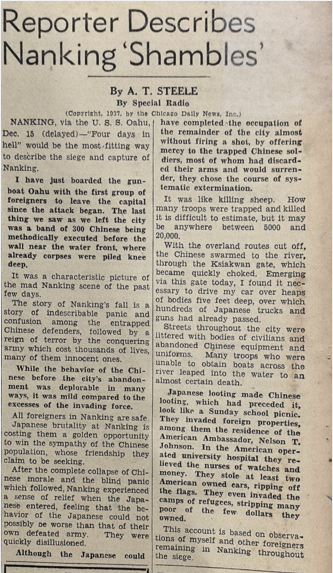
On September 22, 1937, the Detroit News reported: “Today, over 50 Japanese planes once again brought death and destruction from the sky, resulting in more than 200 Chinese civilian casualties. Most of the victims were those unable to flee to the safety of the surrounding countryside.”
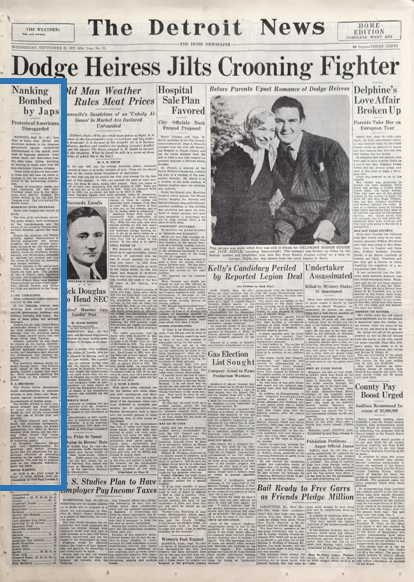
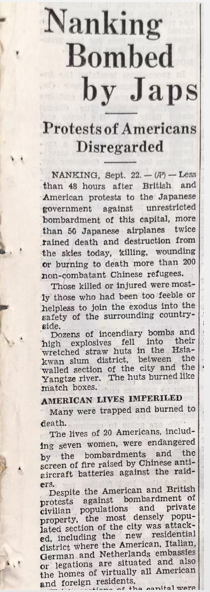
On September 22, 1937, the Chicago Daily Tribune reprinted an Associated Press report on its front page: “Ignoring protests from the United States and the United Kingdom, Japan carried out a terror bombing of this densely populated city today, lasting for an hour and a half... Bombers dropped their payloads at 10:30 a.m. and 1:35 p.m. over the city of one million residents in a ferocious assault.”
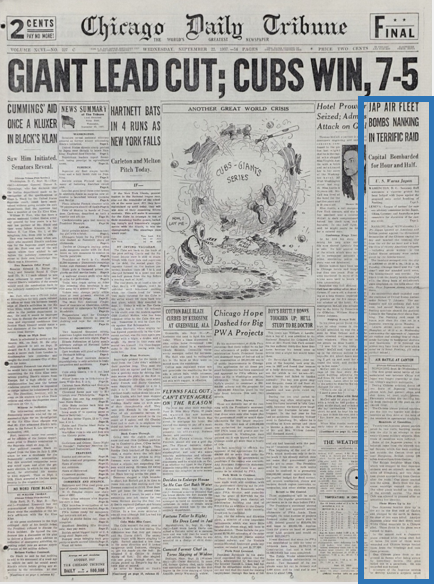

On September 23, 1937, the front page of the New York Times reported: “For several hours yesterday fifty Japanese planes staged two series of raids on Nanking, and after the last bomb had fallen more than 200 civilians were found to have been killed or wounded.”
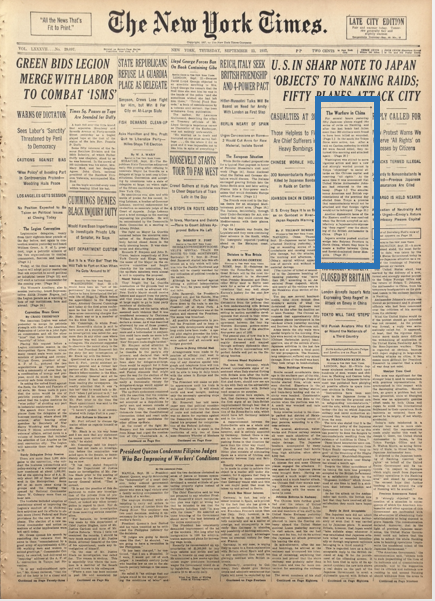
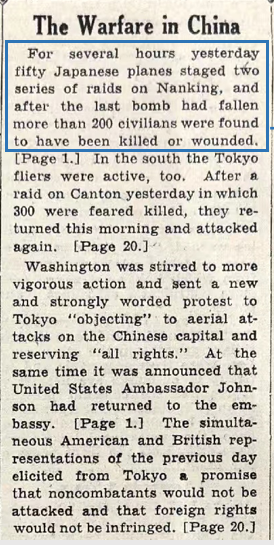
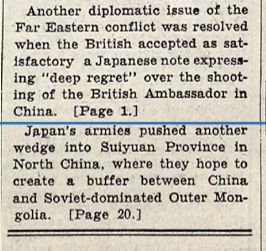
On September 23, 1937, the Chicago Daily Tribune reported: “Over 50 Japanese planes participated in the air raids, dropping more than 200 bombs on the city and causing over 200 Chinese civilian casualties, mostly concentrated in the poorest areas of the city. Many were burned alive, and the slums by the Yangtze River in Xiaguan ignited like matchboxes... The streets were strewn with the mutilated and charred bodies of elderly people, women, and children.”

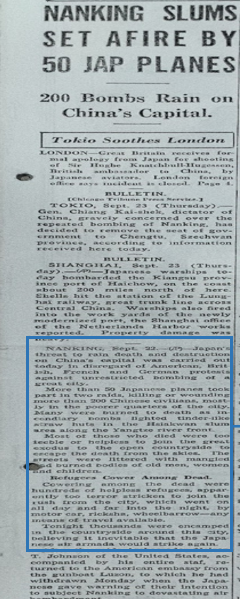
On September 25, 1937, the front page of the Detroit News reported: “Today, 80 Japanese aircraft bombed the Chinese capital for nearly 7 hours, causing the most severe destruction since the Japanese air raids began... The Nanking Power Plant, valued at $1 million, was reduced to rubble. The city’s water supply system was paralyzed... Facilities for lighting, water, and food—vital to one million residents—were destroyed.”
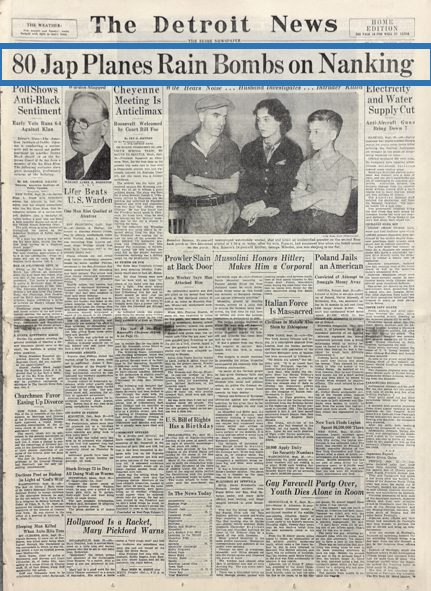
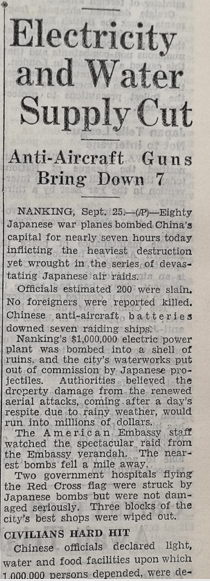
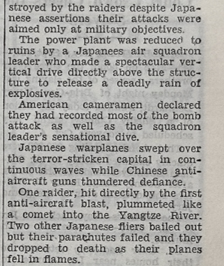
On October 12, 1937, the second page of the New York Times reported: “The University of Nanking Hospital is now the only large hospital operating in Nanking. Because of the new burdens placed upon its resources, it is in great need of additional money and medical supplies, a cabled message to trustees of that institution here stressed. Vaccines to combat tetanus, small-DOX and diphtheria are sorely needed, the cable stated.”
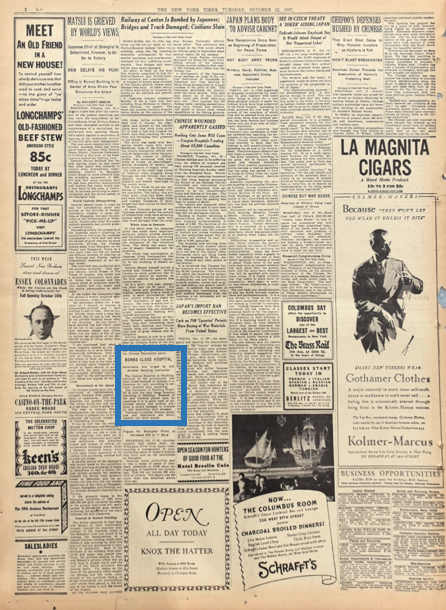
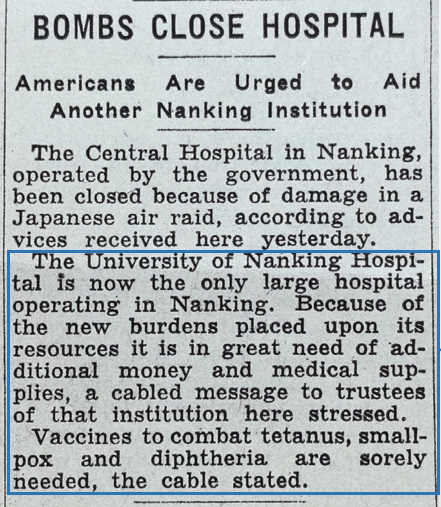
On December 7, 1937, the Japanese troops approached the city of Nanjing. On that day, the front page of the New York Times reported: “Enraged over the frustration of their intended entry into Nanking this morning, the Japanese raided China’s former capital with ninety planes, believed to be the largest demonstration of its kind in the history of aerial warfare. The results are not known, but hundreds of bombs were dropped and the widest confusion was created.”
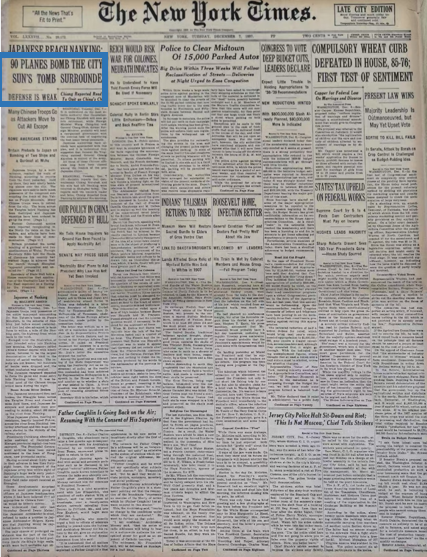
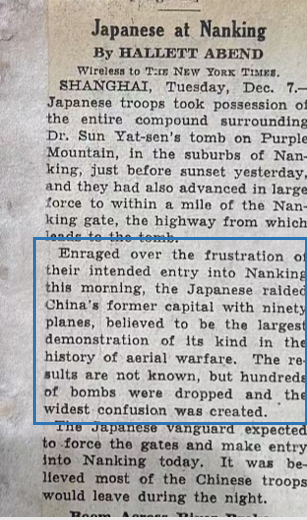
On December 9, 1937, the front page of the New York World-Telegram reported: “By 7 p.m. on the 9th, Japanese air units had bombed the Chinese capital all day. Yet Chinese troops continued to hold their positions around Nanjing. Defensive artillery fired fiercely at Japanese forces approaching from the south and southeast... Japanese headquarters issued an ultimatum demanding Nanjing’s surrender by noon on Friday.”

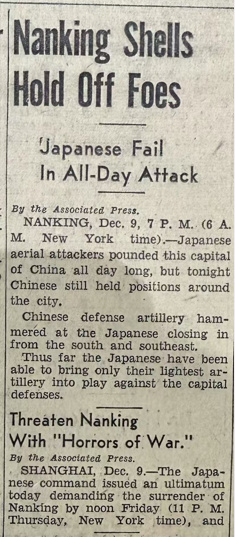
This Collection of Historical Materials Is of High Value
After conducting research and appraisal on this collection of historical materials, researchers Zhang Sheng and Wang Weixing and Professor Yang Xiaming from the Institute of National Heritage & International Peace unanimously concluded that these materials are quite precious and possess significant value for collection, research, and exhibition. This is mainly reflected in two aspects: "Firstly, it brings together evidence of the Japanese military's indiscriminate bombing of Nanjing over nearly four months. The bombing of Nanjing by the Japanese military was also an important part of their aggressive atrocities, which attracted widespread attention and coverage from Western media, including the United States. The large number of newspapers brought by Mr. Lu this time vividly demonstrates the continuous focus and reporting by American mainstream media, including The New York Times, on the Japanese military's bombing of Nanjing, including several reports from September, October, and December 1937. Secondly, it has uncovered the earliest original report from the international community on the Nanjing Massacre. The report published in the San Francisco Chronicle on December 18, 1937, which was reprinted from the Chicago Daily News, is the earliest report by Western war correspondent Still on the Nanjing Massacre. Still had left Nanjing on December 15, 1937. The memorial hall had previously collected a photocopy of this report from the Chicago Daily News, but this time, Mr. Lu has managed to obtain the original copy."
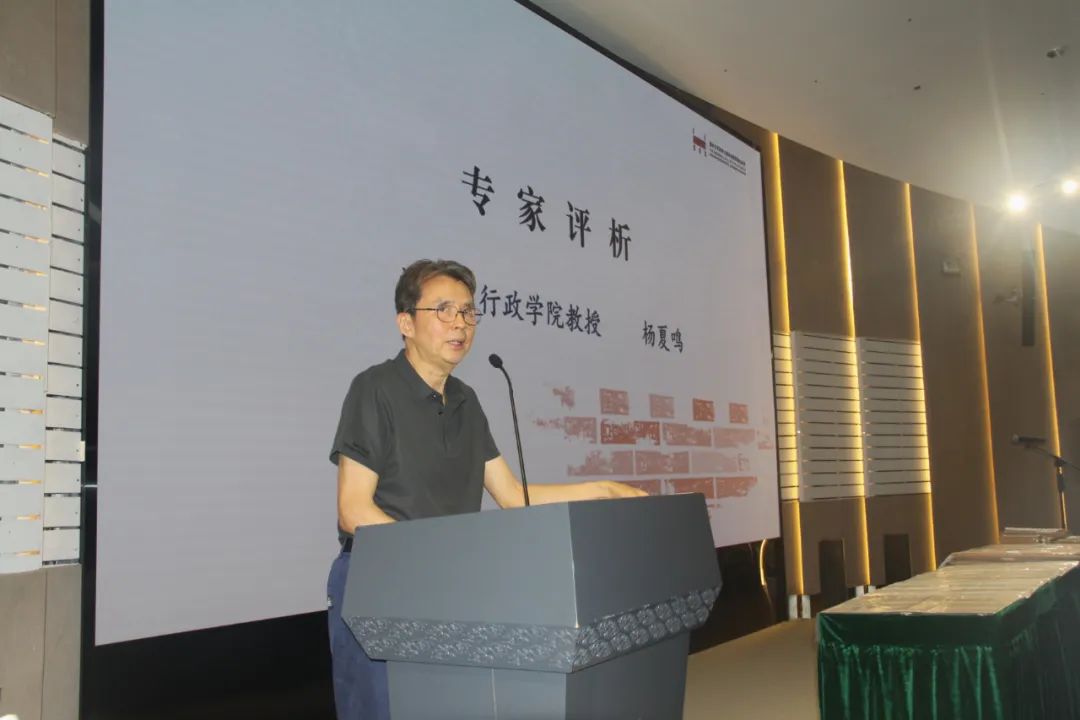
Yang Xiaming, a researcher at the Institute of National Heritage & International Peace, provides commentary.
Zhou Feng, Deputy Director of the Propaganda Department of the Nanjing Municipal Committee of the Communist Party of China and Director of the Memorial Hall, accepts the donated cultural relics and historical materials from Lu Zhaoning on behalf of the Memorial Hall and presents him with a certificate of collection.
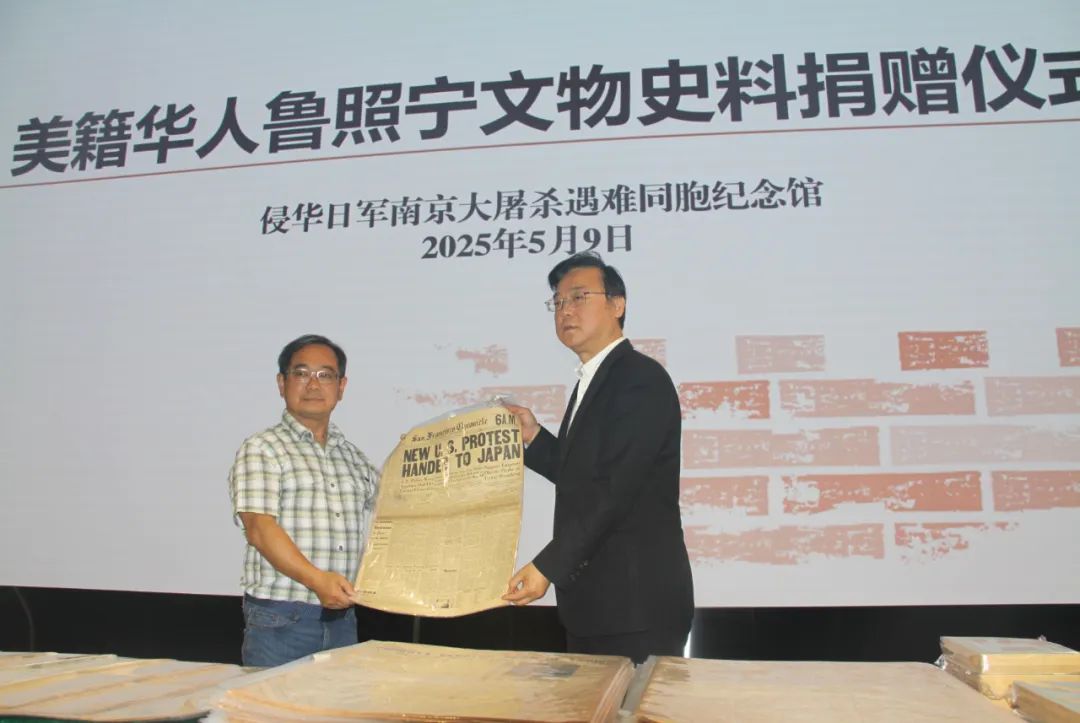
"Nanjing Is My Hometown"
Lu Zhaoning was born in Nanjing Drum Tower Hospital on October 26, 1964. At that time, his home was located at No. 364 and No. 366 Zhongshan Road, Nanjing (the site of today's Nanjing Drum Tower Post Office Building). On May 7, 1980, two months before graduating from junior high school, Lu Zhaoning and his entire family of six, spanning three generations, immigrated to the United States. This time, he returned to his hometown with “historical materials” on the very same day, May 7, exactly 45 years later. With slightly red eyes, he said that the day he left would be unforgettable for the rest of his life. Despite having lived in the United States for many years, Lu Zhaoning still speaks fluent and authentic Nanjing dialect. He said, "Nanjing is my hometown."
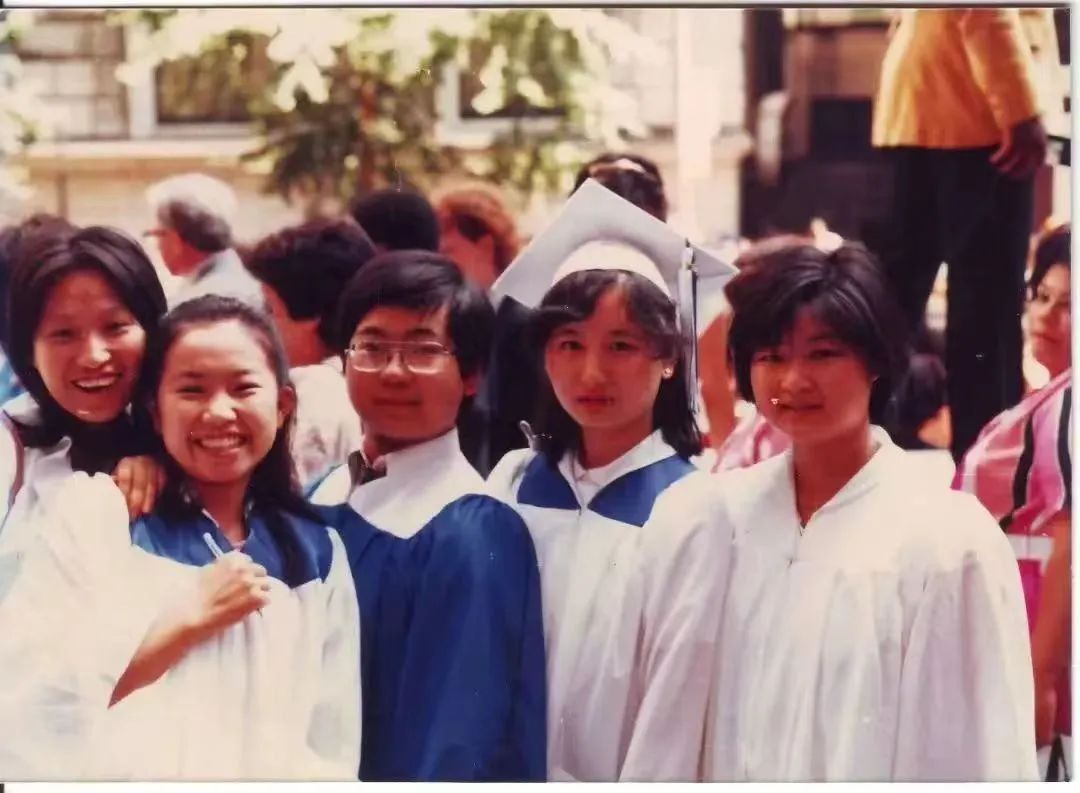
Lu Zhaoning (front row, third from left) in his juvenile years.
Twists and Turns in Contacting the Memorial Hall
At the end of the last century, Lu Zhaoning saw news about the Nanjing Massacre in overseas Chinese newspapers. He immediately recalled what his mother had told him when he was a child: during the Japanese invasion of China, his grandfather had been slapped by the Japanese and had two of his teeth knocked out. This prompted him to begin consciously understanding this period of history. Later, he came across the book The Rape of Nanking: The Forgotten Holocaust of World War II by Chinese-American writer Iris Chang.
Through the contact phone number and address on Nanjing's special edition in the China Press of the United States, which is located at No. 2 Beijing West Road, Nanjing, China, Lu Zhaoning got in touch with a journalist from Xinhua News Agency. With the help of the journalist, he established contact with the Memorial Hall. In the spring of 2004, Lu Zhaoning decided to donate two books related to the Nanjing Massacre that he had collected in the United States to the Memorial Hall. It was then that he decided to collect the historical records for his hometown and the Memorial Hall.
21 years, 2152 Items (Sets)
Over the past 21 years, Lu Zhaoning has donated a total of 2,152 pieces (sets) of historical materials to the Memorial Hall. He primarily uses the international website eBay, searching with keywords such as "Nanking," "Nanjing," "China 1937," "WWII," and "WW2." Based on the search results, he filters and selects historically significant and representative materials, acquiring these "dormant" pieces of evidence through auctions or fixed-price purchases.Lu Zhaoning devotes a substantial portion of his income to bidding on these materials. To support his continuous collection of historical materials, during the first 20 years of his career, he often worked overtime to earn extra pay. "I worked as much in a year as others did in two and a half years. Normally, we work eight hours a day, and any overtime is paid at 1.5 times the regular rate. Sometimes I worked all night, and sometimes I worked on weekends," he said. In terms of living expenses, he keeps his costs to a minimum. Shaking a water bottle in his hand, he told the reporter, "I bought this on a website in the United States for less than 35 RMB". Given his income at the New York Power Authority, he could easily afford a middle-class lifestyle, but he chose a minimalist way of living. Initially, his family and friends were strongly opposed to his decision. "My father wanted me to take better care of the family. Friends thought that with this money, I could live a better life," he said. However, over the years, Lu Zhaoning has persisted in his choice, and his family's stance has evolved "from initial opposition to silence, then to tacit acceptance, and now to full support." When asked if he ever thought about giving up during this process, he replied firmly, "Not once!"
Six Members of the Lu Family Perished During the Japanese Invasion of China
In the process of continuously collecting historical materials, Lu Zhaoning also uncovered his family's tragic past during the Japanese invasion of China. After communicating with his father, Lu ZhenGuo, the long-buried family stories were gradually brought to light. Lu ZhenGuo's father, second uncle, grandmother, eldest aunt, younger aunt, and the son of his third uncle all perished during the Japanese invasion. According to Lu ZhenGuo's recollection, in 1937, his grandfather owned five shops and one residential house in Nanjing. When Nanjing fell, four of the houses were burned down to ruins. The remaining two had their doors, windows, floors, and wooden beams completely dismantled. "My second uncle, Lu BaoYin, refused to flee and stayed in Nanjing to guard the house. He lived on the second floor. When he heard people entering the courtyard, he went downstairs to check and was discovered and shot dead by Japanese soldiers," said Lu ZhenGuo. Lu BaoYin's name is inscribed on the Memorial Hall's Wall of Names for the victims.The day before the donation ceremony, Lu Zhaoning braved the rain to visit the Wall of Names, where he paid his respects to his relatives and the many victims of the Nanjing Massacre by offering white chrysanthemums. He stood for a long time in front of his second grandfather, Lu BaoYin's name.


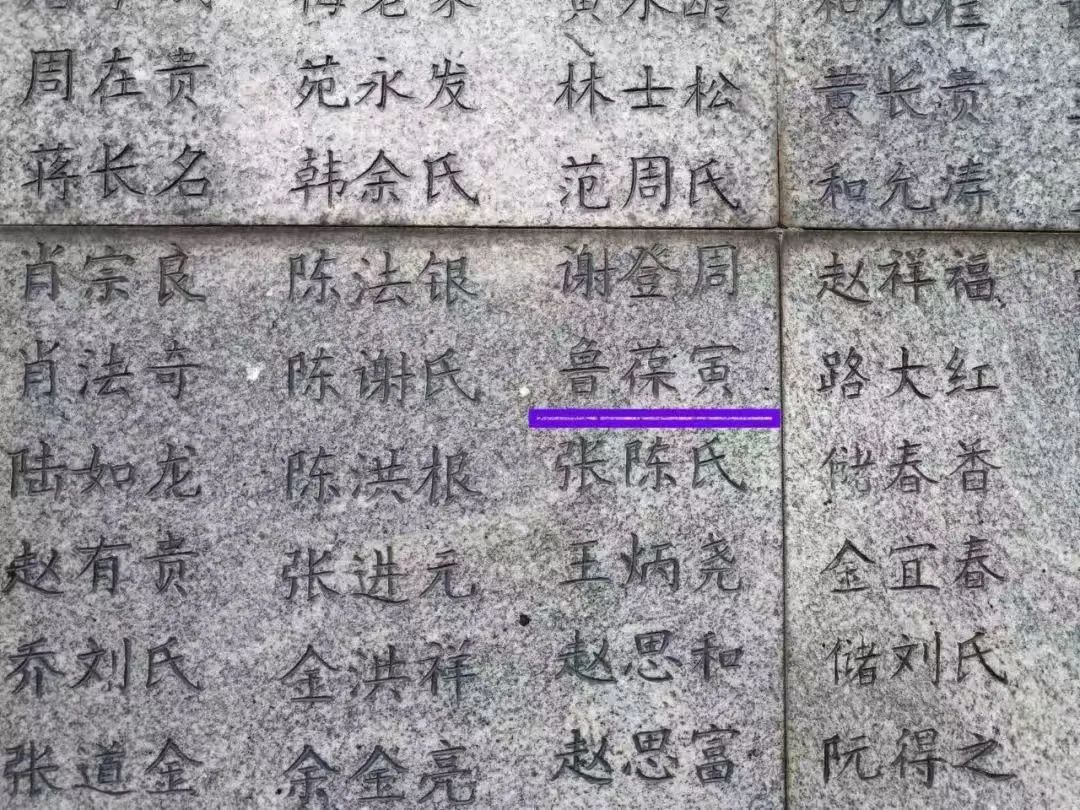
"I'm Willing to Endure Any Hardship for the Donation of Historical Materials"
Over the years, the historical materials donated by Lu Zhaoning have been exhibited in several exhibitions at the Memorial Hall, including the “Nanjing Massacre Exhibit” and the “Nanjing Massacre Literature Exhibit.”
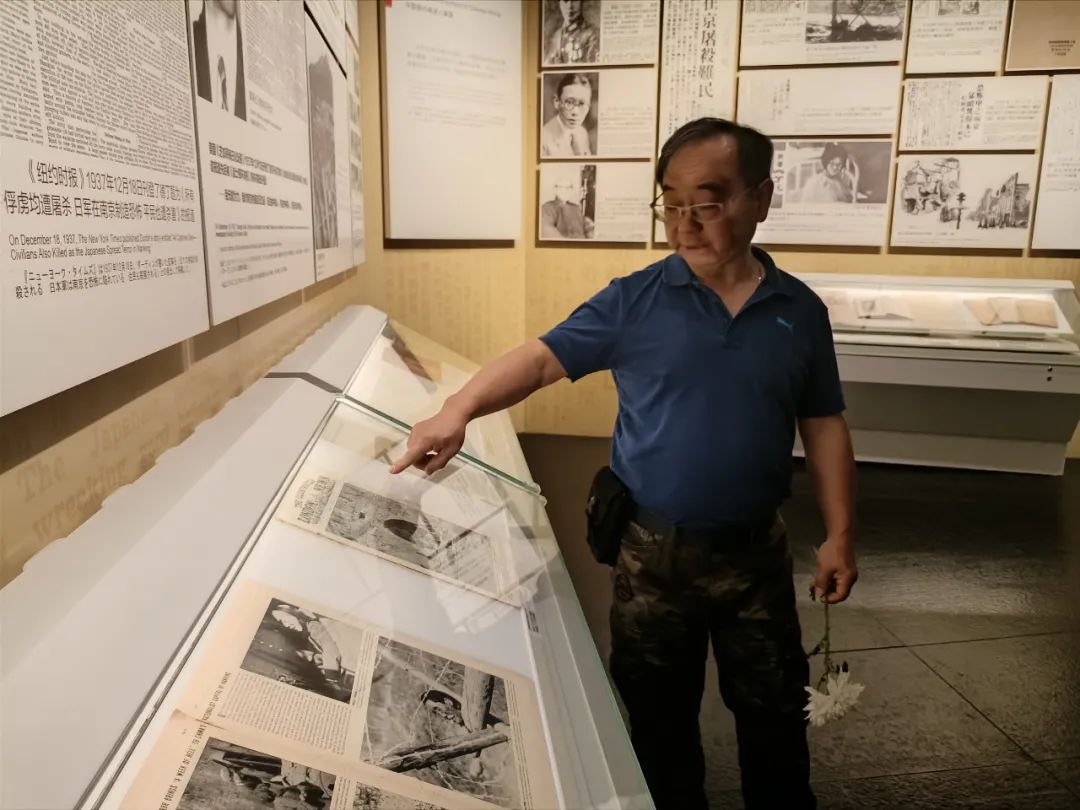
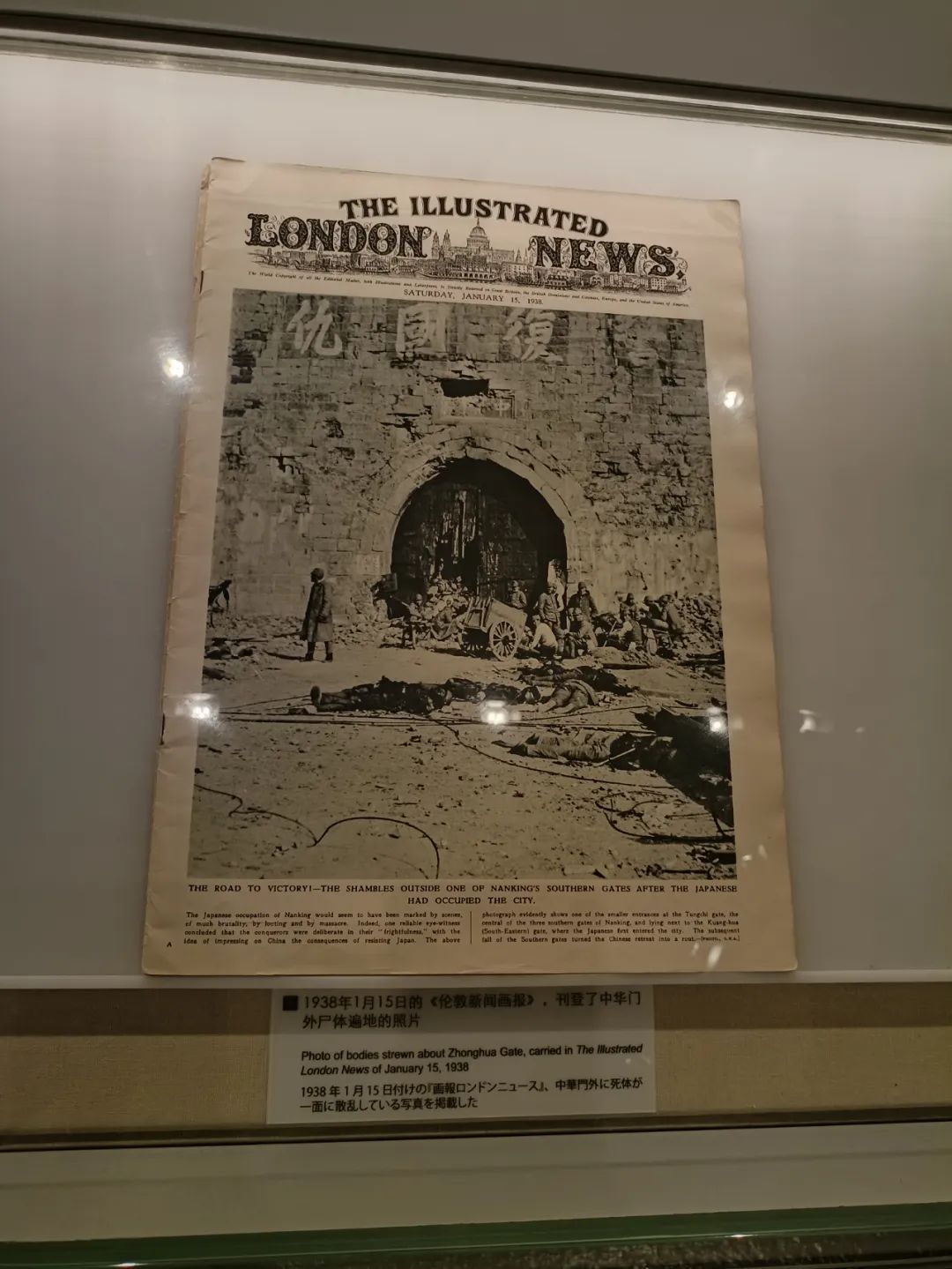
Pointing to the December 14, 1937 edition of the Chicago Daily Tribune in the display case, which featured a report on the "hundred-man killing contest," Lu Zhaoning said, "This is the first time I've seen Western media provide a contemporaneous report on the 'hundred-man killing contest.' I donated this newspaper to the Memorial Hall in 2023, and it's now on display for audiences from both within China and abroad to view. I feel that what I'm doing is truly valuable. Returning these historical materials to Nanjing and entrusting them to the Memorial Hall for safekeeping serves two purposes: one is for historical research, and the other is to allow an increasing number of visitors to see the truth of history. No matter how hard it gets, it's all worth it."
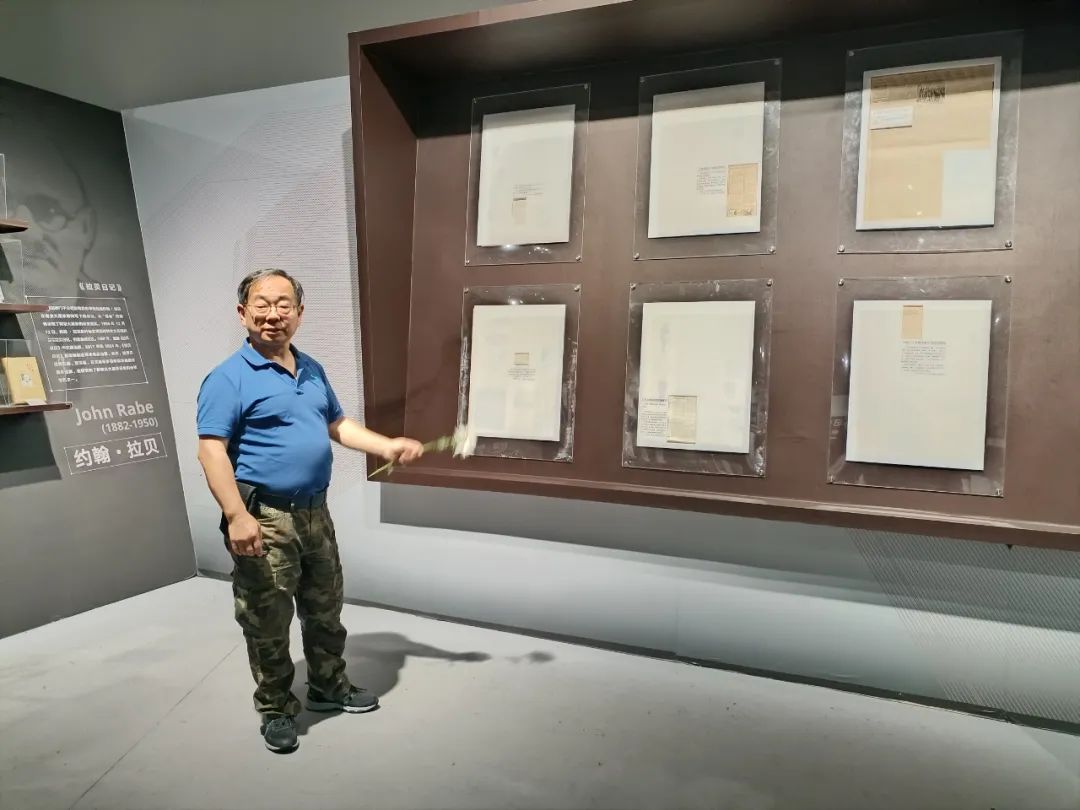
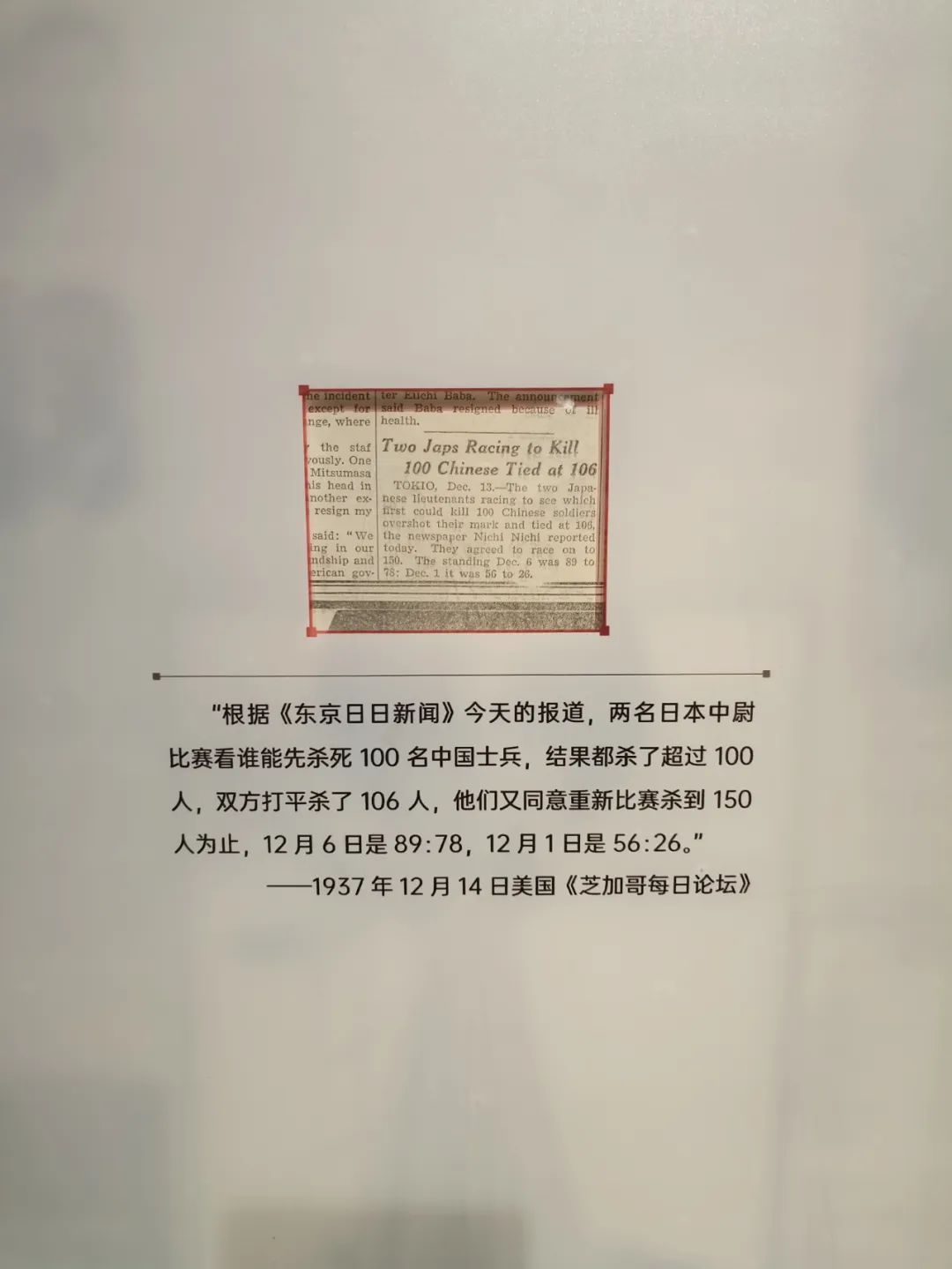
"There Is No End to Donations"
Lu Zhaoning retired last year and now has more time to devote to collecting historical materials. He said, "Although the tragic history of the Nanjing Massacre has become a thing of the past, we Chinese people can never forget it! I was born in Nanjing, and my roots are here. I have a responsibility to contribute to my motherland and hometown. For this unforgettable historical memory, I will continue to collect and donate historical materials. For me, there is no end to the donations." He has adopted the motto, "A superior person never stops; he rests only when he is laid to rest." Lu Zhaoning's wife, Zhang Limin, who has been quietly supporting him all along, and several of his American friends also attended today's donation ceremony. Zhang Limin, whose ancestral home is in Jilin, had a grandfather named Zhang Zuozhou who participated in the resistance against the Japanese invasion. She was born in Taiwan, China, and learned about the history of the Nanjing Massacre from a young age. After living in the United States with Lu Zhaoning for many years, she strongly supports his efforts to collect historical materials overseas. She said that over the years, Mr. Lu has always bought the cheapest items and often visits discount stores to purchase clothes for just five dollars. Even when she tries to persuade him otherwise, he won't listen. "He immerses himself in the search for historical materials, sparing no expense, and I think it's very meaningful. Because someone has to keep doing this to let the world understand the history of the Nanjing Massacre." She emphasized, "We should not harbor hatred, but we must remember!"
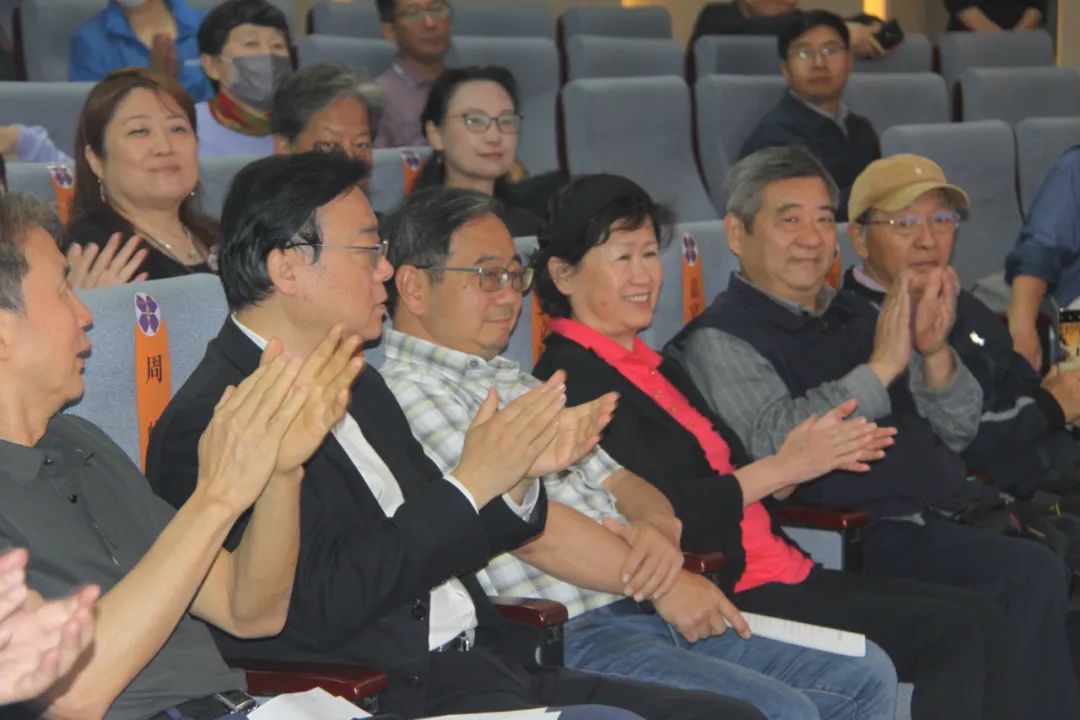
His wife, Zhang Limin, is third from the right

